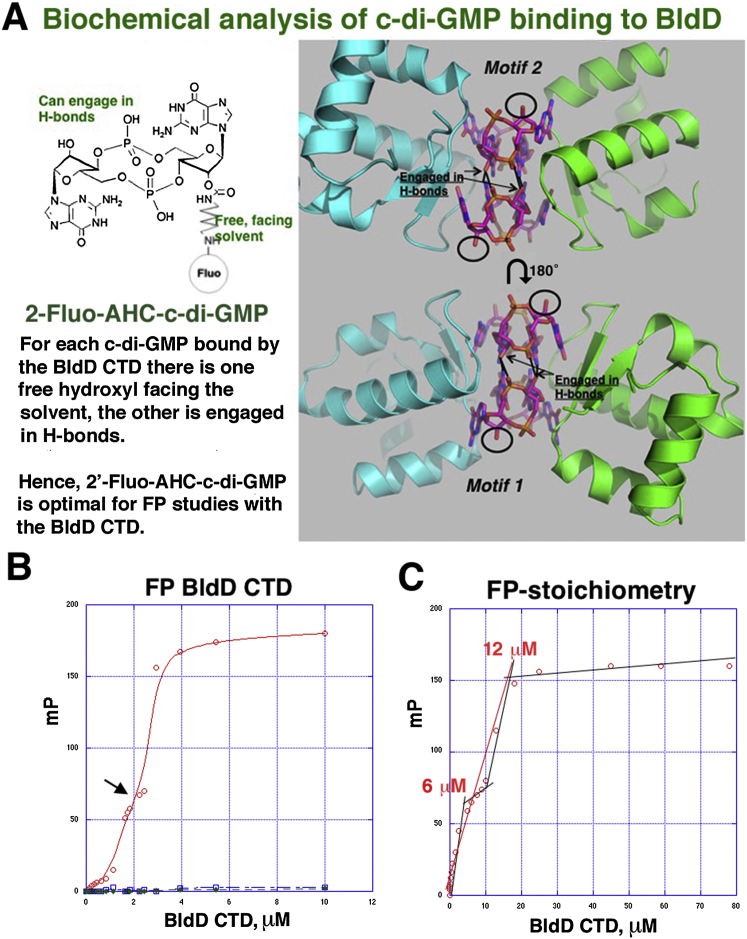Figure S5.
Determination of BldD CTD Affinity, Stoichiometry, and Specificity for c-di-GMP by Fluorescence Polarization, Related to Figure 5
(A) Left is the singly fluoresceinated probe, 2′-Fluo-AHC-c-di-GMP, used in FP binding experiments. Right, the BldD-c-di-GMP structure shows that one ribose of each c-di-GMP must be unmodified to permit hydrogen bonding (arrowed), while the other is free (ringed), making 2′-Fluo-AHC-c-di-GMP an optimal probe for binding studies.
(B) Binding isotherm of WT BldD CTD (red circles), and the Motif1/Motif2 (DGR-X8-DQDR) CTD mutant (blue squares) to 2′Fluo-AHC-c-di-GMP. The green squares show the binding isotherm of WT BldD CTD to 2′-Fluo-AHC-c-di-AMP. The results reveal that WT BldD binds c-di-GMP with high affinity but shows no binding to c-di-AMP and that the BldD DGR-X8-DQDR mutant does not bind c-di-GMP. The Kd for the WT BldD CTD binding to c-di-GMP was 2.5 μM. A possible initial binding event (at 1.7 μM) is indicated by a black arrow.
(C) Determination of the stoichiometry of the BldD CTD-(c-di-GMP) complex. To determine the binding stoichiometry, the same FP conditions as B were used but with 25 μM c-di-GMP (total concentration) added to the binding reaction, a concentration which is ∼10-fold above the Kd and a necessity for proper determination of the binding stoichiometry. The graph of the resulting data shows a linear increase in the observed mPs until saturation of the binding sites, after which the binding curve flattens. The inflection point can be observed at a BldD protomer concentration of 12 μM, which, when divided by the concentration of c-di-GMP (25 μM), indicates a stoichiometry of two CTD protomers per four c-di-GMPs. There is a possible inflection point at 6 μM, which would indicate a binding stoichiometry of two c-di-GMPs/CTD dimer (correlating with the possible initial binding event in B). These two very close binding events are consistent with positive cooperativity.

